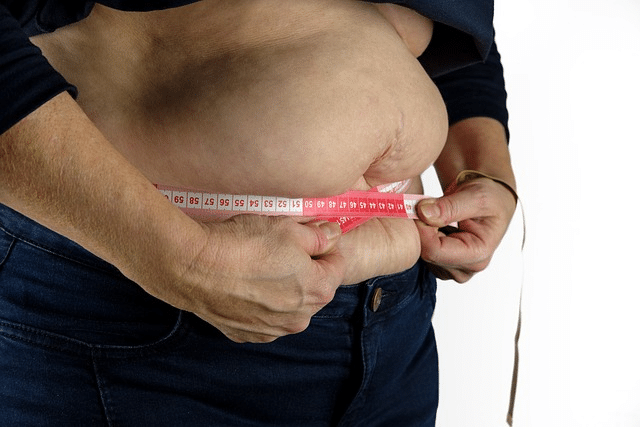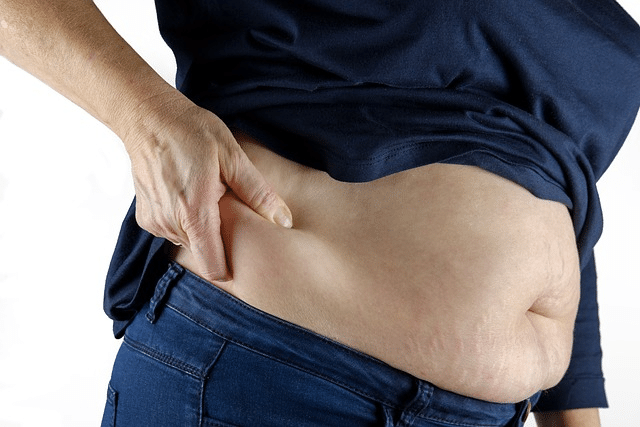As we age, many individuals notice a gradual increase in deep abdominal fat, also known as visceral fat or belly fat. Unlike subcutaneous fat found just beneath the skin, visceral fat surrounds vital organs within the abdominal cavity. Too much visceral fat is not only aesthetically displeasing, but also poses significant health risks. Understanding why belly fat accumulates with age and discovering effective ways to combat it is crucial for maintaining optimal well-being. In this blog, we will delve into the science behind age-related abdominal fat gain, explore its associated health implications, and discuss practical strategies to lose weight and belly fat.

The Science Behind Visceral Fat Accumulation:
Age-related visceral fat accumulation is a multifactorial process influenced by various biological factors. Hormonal changes, particularly the decline in sex hormones such as estrogen and testosterone, contribute to an increase in more visceral fat deposition. These hormonal imbalances can disrupt the body’s metabolism and promote too much visceral fat and subcutaneous fat storage in the abdominal region. Additionally, age-related decreases in muscle mass and physical activity levels contribute to a slower metabolism, making it easier to accumulate belly fat.
Health Implications of Belly Fat:
Visceral fat is not just an aesthetic concern but also a significant risk factor for various other health problems and conditions. Research has consistently shown that more visceral fat and subcutaneous fat is associated with an increased risk of cardiovascular diseases, type 2 diabetes, insulin resistance, hypertension, and certain types of cancer. This type of belly fat is metabolically active, releasing inflammatory substances that can lead to chronic low-grade inflammation and impair the normal functioning of organs. Understanding the health implications of belly fat emphasizes the importance of proactive measures to reduce its presence.

Lifestyle Modifications for Losing Belly Fat:
Balanced and Nutrient-Dense Healthy Diet:
Adopting a healthy diet rich in whole foods, including lean proteins, fruits, vegetables, whole grains, and healthy fats, is essential for reducing belly fat, and body fat overall. Minimize intake of processed foods, sugary treats, and refined carbohydrates. Emphasize portion control and mindful eating to maintain a calorie deficit.

Regular Physical Activity:
Engaging in a combination of cardiovascular exercises and strength training is crucial for visceral fat reduction, and to lose weight overall. Cardio exercises, such as brisk walking, jogging, cycling, or swimming, help burn calories and promote overall body fat loss. Strength training exercises build muscle mass, boost metabolism, and improve body composition, plus reduces excess fat.
Stress Management:
Chronic stress triggers the release of cortisol, a hormone associated with increased abdominal fat storage. Implement stress-reducing techniques like meditation, yoga, deep breathing exercises, and engaging in activities you enjoy to promote overall well-being and reduce cortisol levels, which can then help you lose belly fat.
Sufficient Sleep:
Inadequate sleep disrupts hormonal balance, including those involved in belly fat and body fat metabolism. Aim for 7-9 hours of quality sleep each night to support optimal hormonal function and promote healthy weight management.

Hydration:
Drinking an adequate amount of water throughout the day helps maintain overall health, and can aid in appetite control.
Targeted Abdominal Exercises:
While visceral fat spot reduction is not possible, incorporating core-strengthening exercises like planks, bridges, and abdominal crunches can help tone the underlying muscles and improve posture, resulting in a flatter appearance.
Behavior and Lifestyle Changes:
Cultivate sustainable habits like reducing alcohol consumption, quitting smoking, and avoiding excessive sedentary behavior. These lifestyle modifications contribute to overall health improvements and facilitate visceral fat loss, as well as helping lose weight overall.
Here is the 4th way you can eliminate belly fat:

Our MaximizeHQ transdermal weight control patch features an exclusive weight management formula with hoodia appetite suppressant and seven specific peptides that burn visceral fat safely, plus 7-Keto DHEA that helps to keep new visceral fat from being stored! With our exclusive 8-hour time-release transdermal visceral fat-burning patch, the active ingredient bypasses your digestive system, and is delivered directly to the bloodstream. The with a controlled formula delivery. Our weight loss management patch does not work with caffeine or any other stimulants! It is a scienced based formula that burns body fat safely and effectively.
Purchase the MaximizeHQ Transdermal Weight Control Patch
Wrapping Up:

Belly fat and visceral fat accumulation with age is a common concern, but it is not an insurmountable obstacle. Understanding the scientific factors behind abdominal obesity and excess visceral fat, recognizing the associated health risks, and implementing lifestyle modifications are key to successfully eliminating too much belly fat. By adopting a balanced and nutrient-dense diet, engaging in regular physical activity, managing stress levels, prioritizing sufficient sleep, staying hydrated, and making behavior and lifestyle changes, individuals can effectively combat visceral fat and subcutaneous fat, and enhance their overall well-being. Remember, patience and consistency are essential in this journey towards a healthier, leaner abdominal region. With determination and the right strategies, you can reclaim control over your body composition and live a healthier, more fulfilling life.




